Understanding Fish Behavior: Seasonal Movements and Habitat Preferences
One of the keys to catching more fish is understanding the habitat different fish species prefer throughout the calendar year—and being able to follow their movements from location to location. onX Fish Midwest is invaluable for helping anglers track fish seasonally, but it’s a good idea to get a basic grip on the science of fish behavior to more successfully use the App.
TL;DR: Understanding how fish respond to seasonal changes is key to catching more and bigger fish. Water temperature, oxygen levels, spawning cycles, and food availability drive when and where fish move. In winter, fish slow down in deep, stable water; in spring, they migrate shallow to feed and spawn; in summer, they seek cool, oxygen-rich zones near vegetation, structure, or the thermocline; and in fall, they feed aggressively before returning deep. Habitat choices—rocks, weeds, current, wind, and light—further shape where fish hold. Each species behaves differently: walleyes chase bait shallow in spring and fall, bass follow cover and temperature, panfish shift between weedbeds and basins, and pike/muskie move from shallow spawns to deep ambush points. The onX Fish Midwest App helps anglers track these seasonal shifts, filter lakes by species and size potential, view structure and weather patterns, and use Area Insights + Fishing Hotspots to predict where fish will be—making seasonal patterning simpler and more successful.
Why Fish Behavior Changes With the Seasons
Water Temperature and Oxygen Levels
First, seasonal water temperature changes have a huge effect on freshwater fish, influencing factors such as metabolism, growth, reproduction, and respiration (breathing). Different fish species have specific temperature ranges within which they thrive.
Fish are cold-blooded, meaning their body temperature is largely determined by the surrounding water temperature. As the water warms up, their metabolism increases, they become more active, and require more food. Cooler water slows down their metabolism, making them less active and reducing their food requirements. So, water temperature can play a huge role in how many fish you catch on an outing.
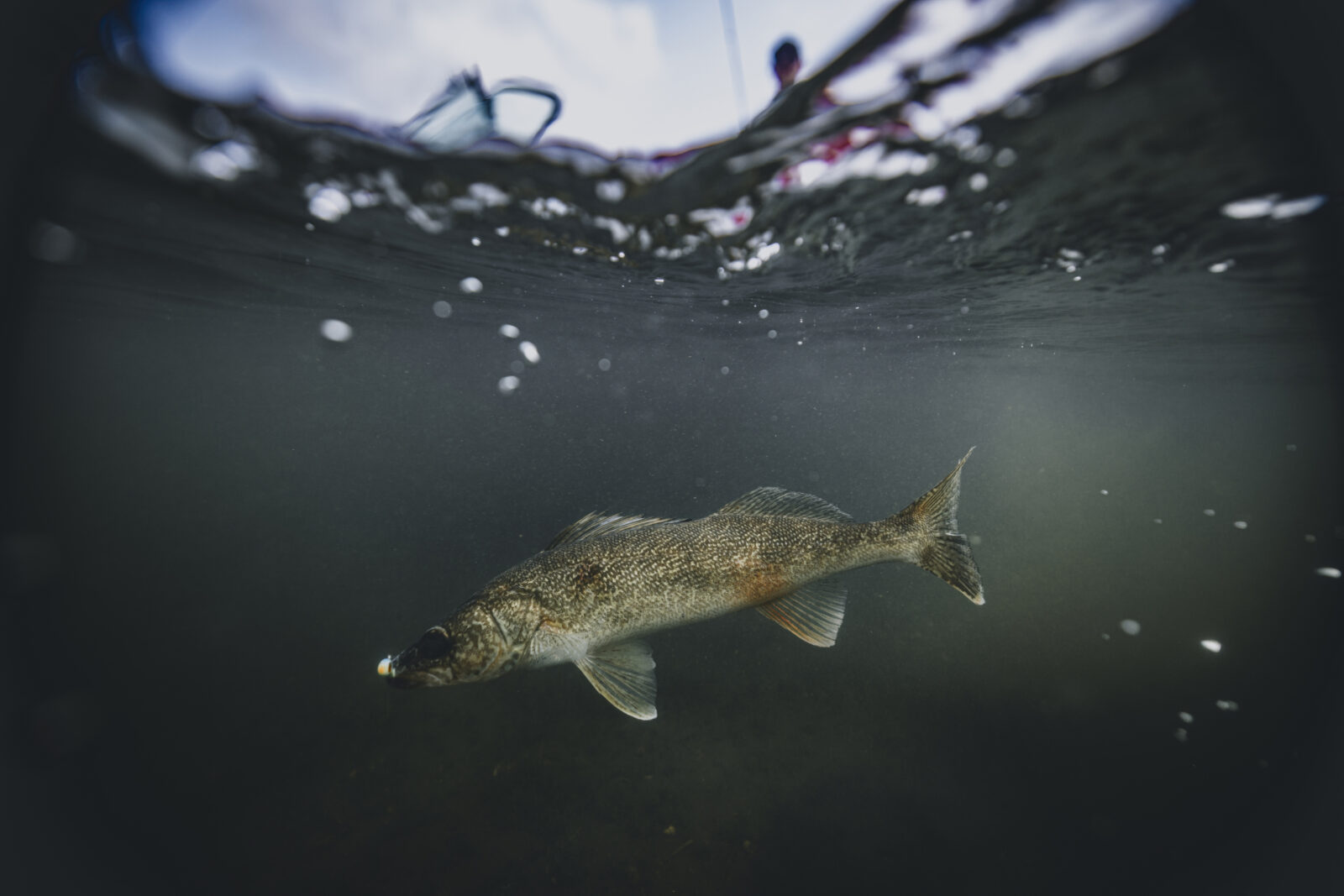
Dissolved oxygen is also essential. Fish extract oxygen through their gills, and the amount of oxygen available in the water can vary depending on factors such as temperature, water movement, and the presence of organic matter. The amount of oxygen available in water can vary throughout the year, and winter brings the biggest challenge in Ice Belt states, where ice and snow can limit oxygen levels. Also, in fall, bacteria consume oxygen to break down vegetation, often leaving areas once active with life dormant due to low oxygen levels.
Fish will routinely move to different areas of the water body to regulate their temperature preferences. In hot conditions, fish may seek cooler depths or shaded areas; in cold conditions, they may move to warmer shallows or near underwater structures where temperatures are higher.
Take out the guessing and confidently Find new lakes
See abundance data, weather, public access, and more to find a new lake to fit your needs with onX Fish
Spawning and Feeding Patterns
Spawning cycles and feeding patterns play crucial roles in gamefish health, behavior, and population dynamics. Influenced by environmental conditions such as water temperature, food availability, and seasonal changes, spawning and feeding patterns can significantly affect fish populations and ecosystems.
Spawning is the reproductive phase of a fish’s life, and it occurs at specific times of the year depending on the species. Freshwater fish typically spawn in response to environmental cues like water temperature, photoperiod (day length), and water flow. Many fish species spawn during specific seasons, usually in spring or early summer when water temperatures are optimal for egg and fry development. The timing of spawning ensures that the offspring are born when food resources are abundant and the environment is conducive to survival. A fish’s ability to spawn successfully depends on factors like water quality, availability of spawning sites (like submerged vegetation or gravel beds), and the presence of mates.
Feeding patterns are influenced by the availability of food, environmental factors, and the fish’s life stage. These patterns impact their health, growth, and reproduction. Fish feeding patterns are often seasonal. In spring and summer, fish tend to feed more actively due to increased food availability, like zooplankton, insects, and minnows/young of the year. In fall and winter, feeding activity slows down, and many species become less active or enter a state of reduced metabolism.
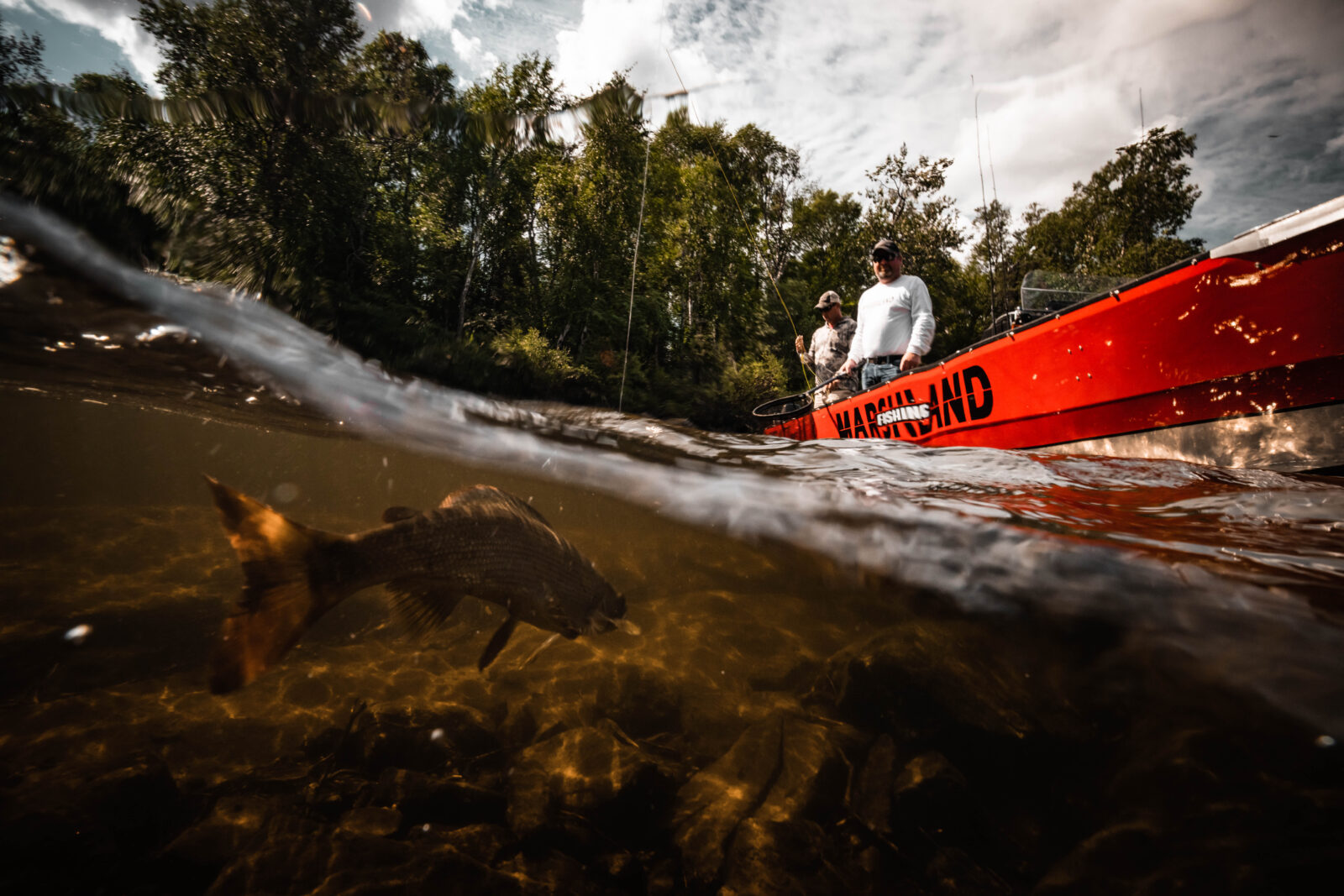
Many fish species increase their feeding activity prior to spawning to build up energy reserves. These reserves are vital for reproductive success, as fish may fast or eat less during the actual spawning period. For instance, female fish may feed heavily to increase egg size, while males might focus on building strength to compete for mates.
When food is abundant, fish grow faster and are healthier. During times of food scarcity, fish may experience stunted growth and higher mortality rates. This can be exacerbated by competition for limited resources.
Predator vs. Prey Movement
Feeding patterns also influence predator-prey relationships. For example, predatory fish like pike or bass may alter their feeding patterns depending on the abundance of prey species. If a predator’s food sources are scarce, it might resort to alternative prey or exhibit more aggressive hunting behaviors.
Seasonal Fish Movement Explained
Where Fish Go in Winter
Freshwater gamefish have different strategies to survive the cold winter months, depending on the species and the specific body of water they inhabit. Most fish will move to deeper areas where the water is more stable in temperature, often staying just above freezing. As temperatures drop, fish become less active. Their metabolism slows and they require less food. They attempt to conserve energy and aren’t chasing much except when they really need the calories, and often condense feedings to certain times of the day (morning and evening).
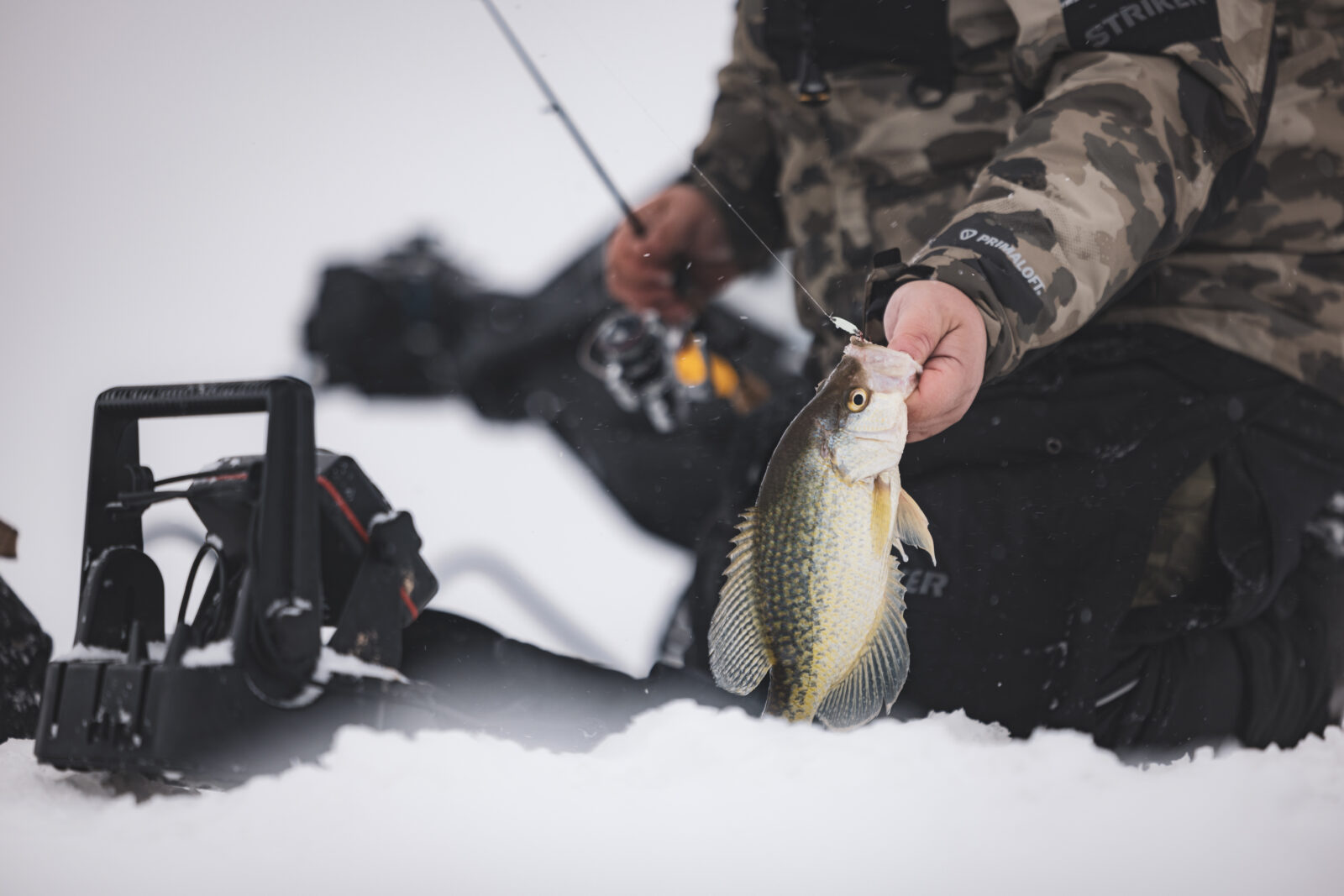
Where Fish Go in Spring
In spring, freshwater gamefish typically move from deeper, winter haunts into shallow waters as temperatures warm up. Many freshwater species, like bass, pike, walleye, and panfish, move into shallower areas to spawn. These fish often seek out the warmer waters near the shore, where temperatures are more favorable for reproduction. The fish may swim into rivers, lakes, or even smaller streams to lay their eggs in sandy or gravelly beds, which offer better chances of survival for the eggs.
Where Do Fish Go in Summer
In the summer, freshwater fish adapt to warmer water temperatures by seeking out oxygen-rich and cool water around shallow vegetation, structure, and any flowing water. In lakes where stratification takes place, with warmer water moving toward the surface, species like bass, pike, and walleyes will move around in no man’s land, hanging just above the thermocline, which can often be seen on fishing electronics. Shade and shelter also become key in summer, so fish congregate around rocks, wood, vegetation, and manmade structure like docks to shield them from the sun and hide them from predators. In summer, gamefish are constantly seeking the right combination of water temperature, oxygen, and food.
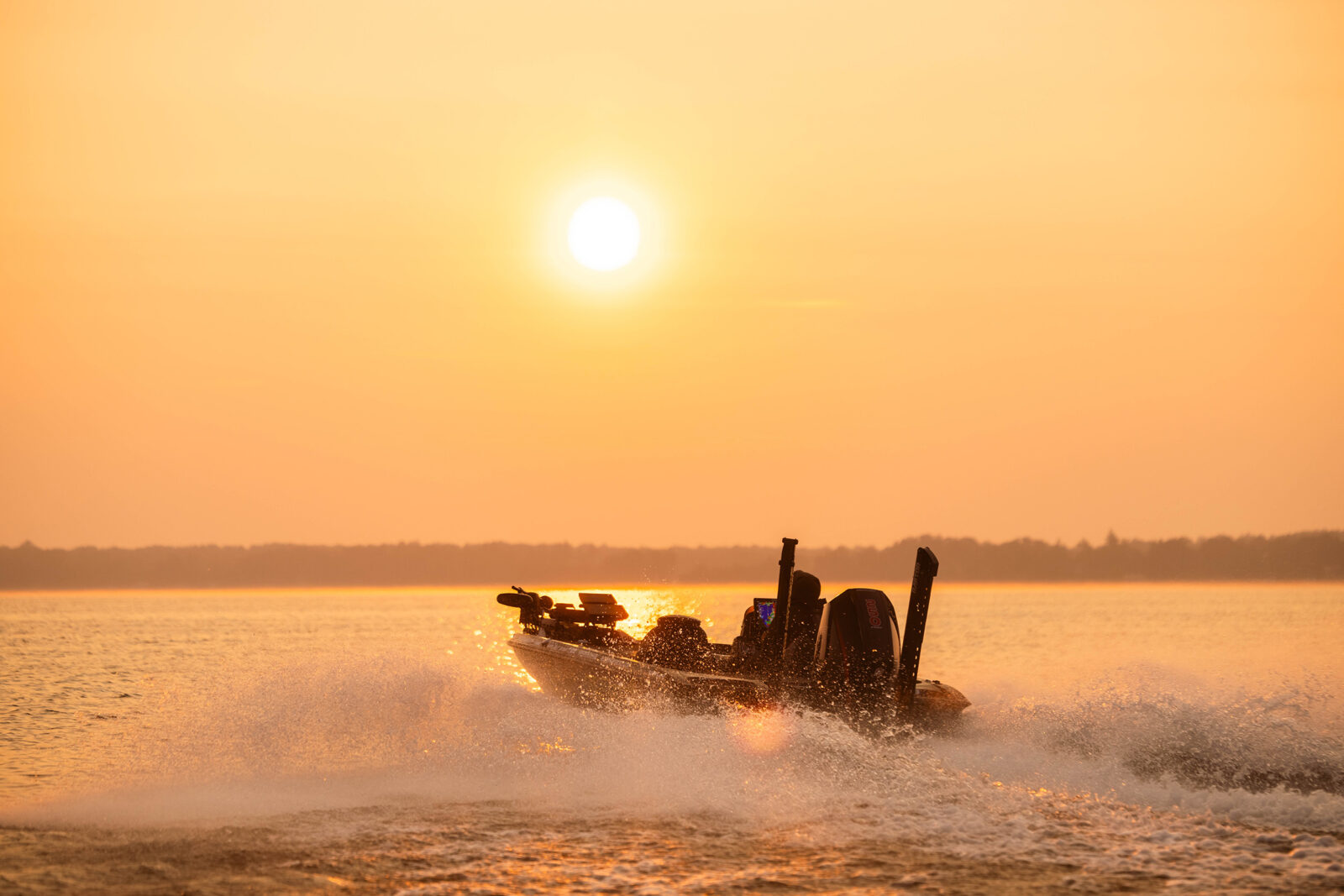
Where Do Fish Go in Fall
In fall, freshwater gamefish undergo some key behavioral changes as temperatures begin to drop and daylight hours shorten. Many species will head to deeper, more stable water where the temperature remains consistent, largely vacating the areas they inhabited during summer.
During the fall, you’ll see fish start grouping up, which allows them to take advantage of food more easily. As fish sense that colder months are on the way, many will start feeding aggressively to build up fat reserves for winter. The fall bass and walleye bite can be something to behold, with fish feeding shallower during late evening, early evening, or at night, where the water is still warm and fish can hunt actively. Same thing with crappies starting to group up in deeper basin areas and feed.
Seasonal Fish Habitat Preferences
Shallow vs. Deep
As mentioned above, fish typically head shallow in spring, which typically coincides with a spawn. Following the spawn with the arrival of summer, fish will do two things: They’ll go deeper to escape the heat, but also hunt shallow and use structure like vegetation, wood, weeds, and docks to protect themselves from the sun. In fall, fish generally start moving deeper, feeding opportunistically around shallow waters during low-light and at night. Then, in winter, fish head for deep waters with stable temperature and oxygen levels.
Vegetation, Rocks, and Sunlight
No matter the season, fish will congregate around good, green vegetation because it provides shelter, food, and oxygen. Rocky areas are great places for fish to hide, nest, and ambush food. Rock also helps with water temperature regulation. At certain times of the year—spring, early ice, and late ice—sunlight can play a huge part in congregating fish. Sunlight supports vegetation growth and oxygen, so fish are attracted to that. It also fosters life, providing food for fish like bass and panfish in shallow to mid-depth waters.
Current, Wind, and Oxygen
In lakes, incoming or outgoing tributary areas provide oxygen-rich currents that foster all kinds of aquatic life. Obviously, in rivers, topside and under currents keep the water oxygenated and food drifts by, so fish often rest in eddies, pools, or on current seams and wait for their dinner without having to move far.
Wind is another oxygenating force that mixes water layers together, creating more temperature stability and stirring up food sources. For walleye anglers, especially, the wind can be a definite ally. Fishing windblown shores and points is always a good idea and often produces stellar bites because that’s where the food is being localized. However, some fish—like panfish and bass—will take shelter from the wind, moving to coves, areas of submerged vegetation, out deeper, or anywhere where the wind’s effect is minimized.
Oxygen can be disbursed via strong winds throughout much of the water column, which is a good thing, especially on small bodies of water. But generally speaking, the warmer the water, the less oxygen it’ll hold. Hence, fish movement in summer to deeper water.
In all, fish habitat is influenced by a marriage of all three factors: current, wind, and oxygen work together to maintain the proper conditions for the gamefish we love to chase. Fish will naturally move, adjust, and find the best spots to conserve energy, feed, and breathe.
Species-Specific Behavior Patterns
Walleye
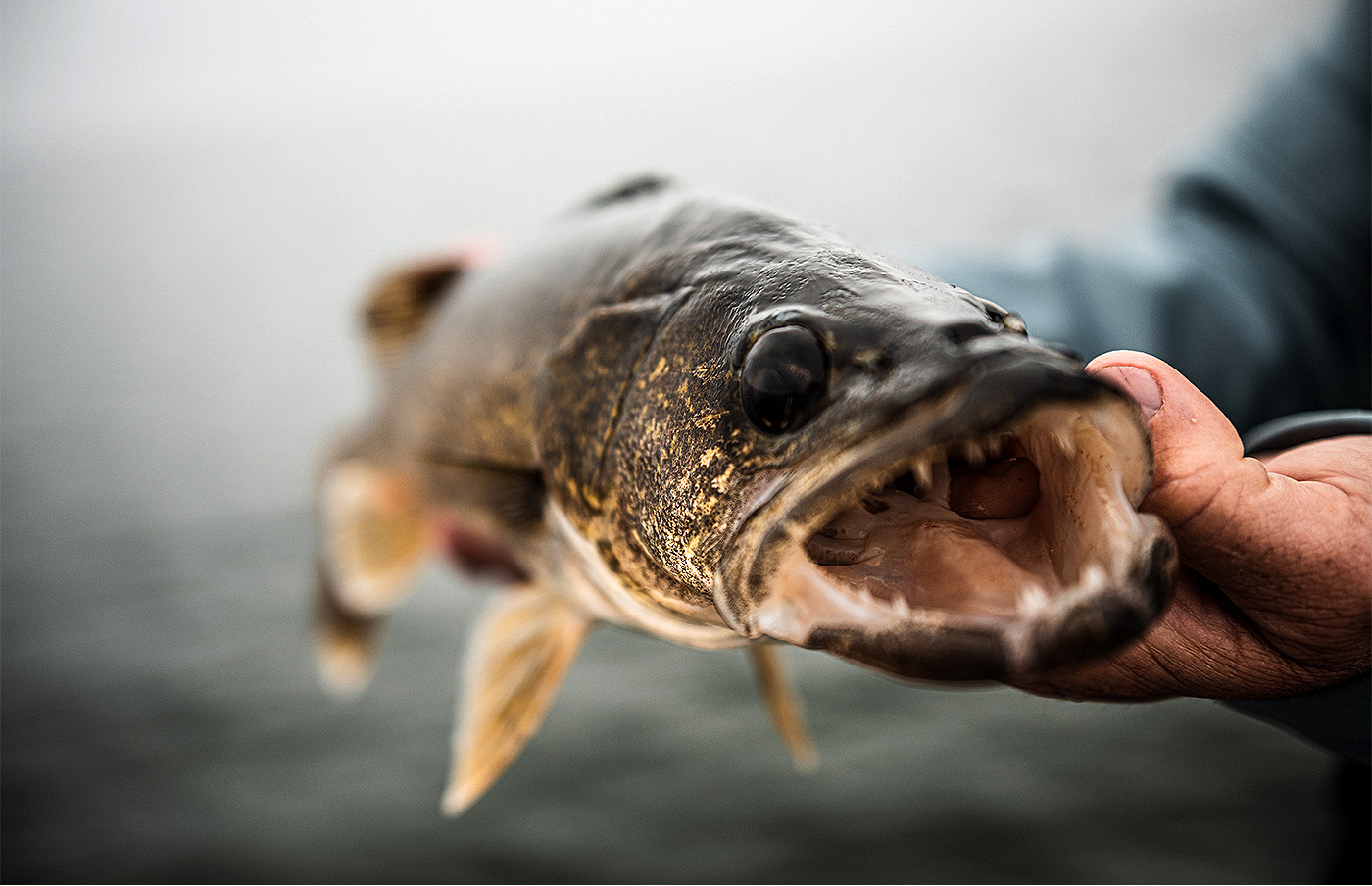
In a nutshell, walleyes head shallow in spring, moving toward shallow, rocky areas. They’ll feed up to the spawn and then again after. How long do they remain in the shallows? In a lot of places, you can find walleyes on the flats up to the first major break line for up to a month. Then, when summer kicks in, they head to offshore structure in deeper, cooler areas, although on some lakes, “weed walleyes” will stick to areas of food in and around vegetation. In fact, you can experience separate populations of fish on the same lake in different locations. Come fall, walleyes will follow baitfish shallow again, feeding up for winter. Then, in winter, you can find them everywhere from flats and breaks to sunken islands, reefs, and other offshore structure. While it’s possible to catch walleyes in winter during the day, especially on stained waters, most great bites occur around dawn, dusk, and nighttime.
Bass (Largemouth and Smallmouth)
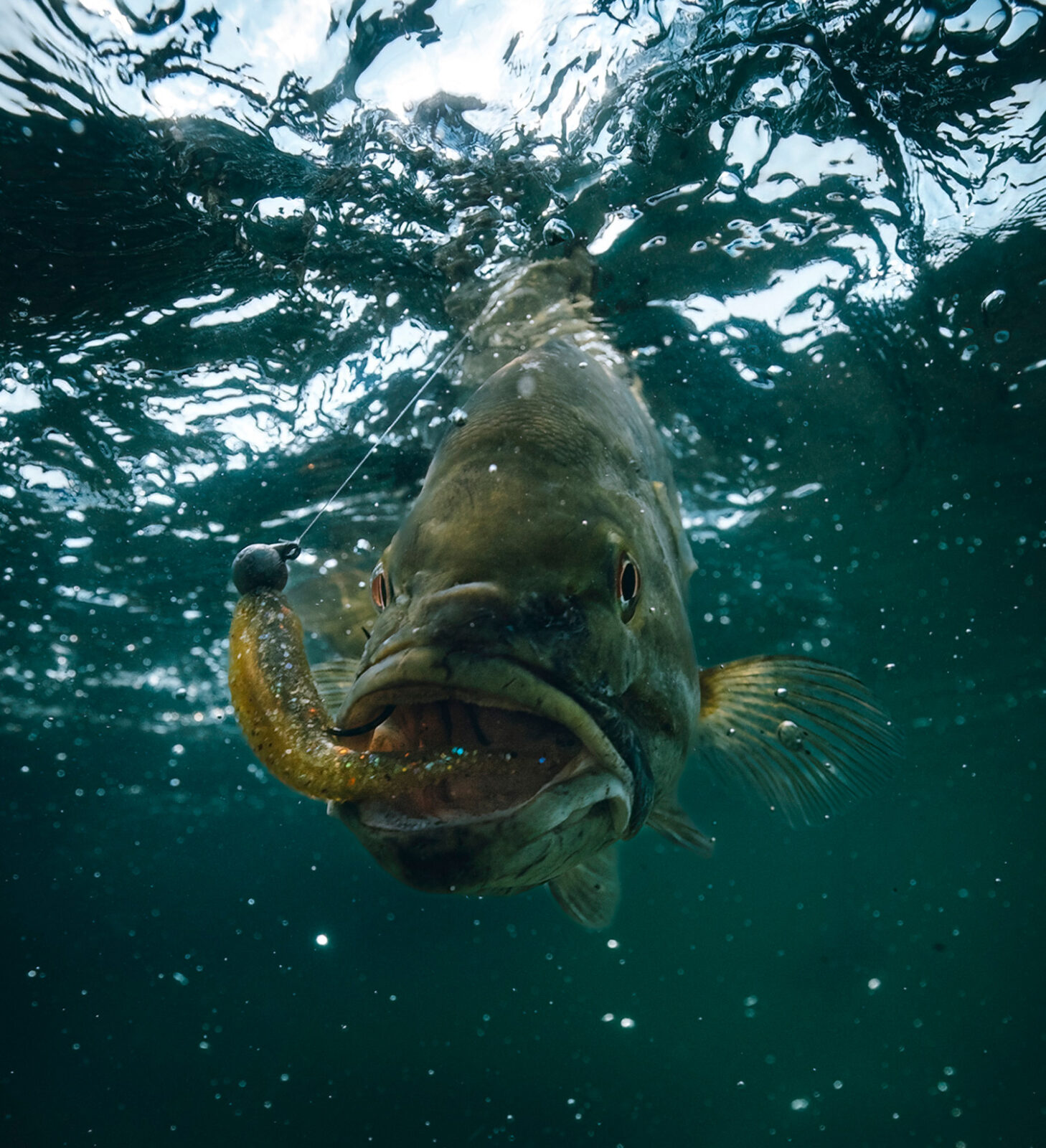
Like walleyes, bass head shallow in spring to feed, spawn, and then feed some more. In summer, bass move to deeper, cooler waters or will situate around sun-blocking structure like docks or weedbeds. In fall, depending on where the food is located, largemouth bass and smallmouth bass will roam shallow or deep, actively hunting prey to prepare for the cold of winter. In winter, bass metabolism slows down, and they like to stay close to structure, only feeding opportunistically.
Crappie and Sunfish
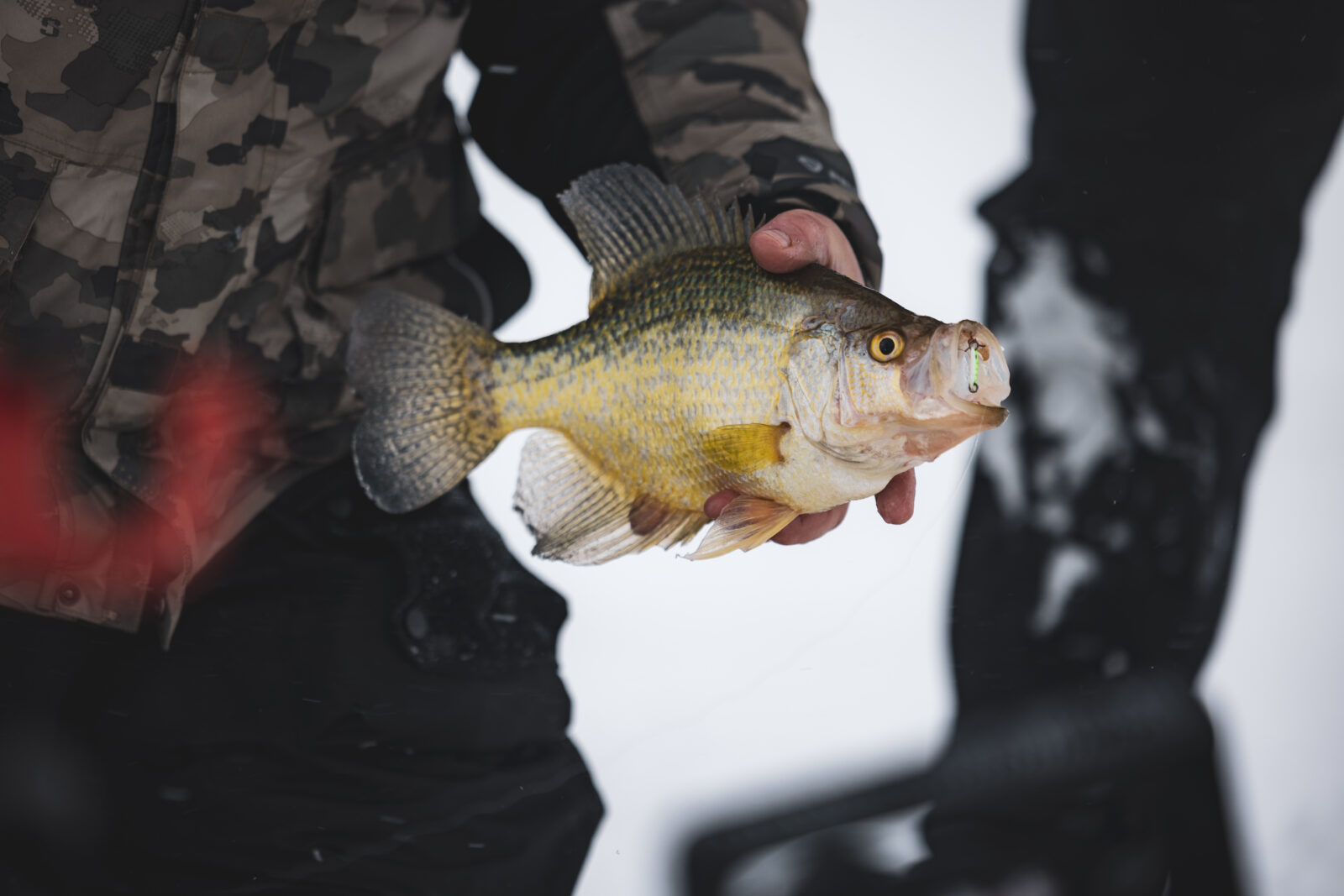
Crappies and sunfish head shallow once the ice recedes, feeding on invertebrates, minnows and anything they can find. As the water warms, crappie and sunfish focus on the approaching spawn, but they do keep feeding post-spawn. During summer, some panfish can still be found shallow, but many move to the nearest, deeper weedbeds or brushpiles. Come fall, panfish move between shallow and deep waters, feeding opportunistically, eventually setting up over deeper open basin areas with soft bottoms and emerging insect life where they will stay all winter, roaming around large basins at different levels of the water column depending on oxygenation and food. But not all panfish will be in basins; some fish can still be found in green weeds if you can find them.
Pike and Muskie
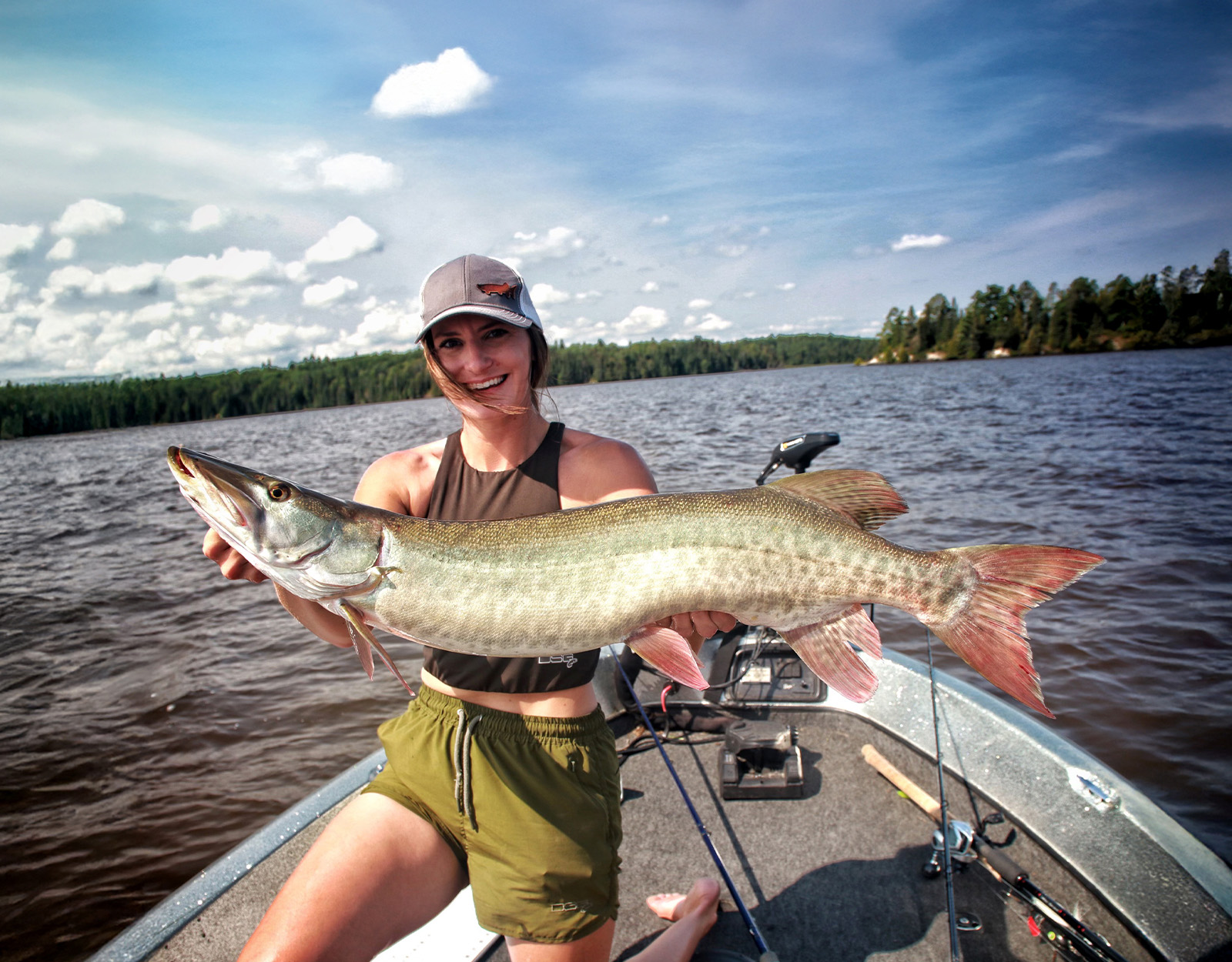
In spring, pike head to shallow, dark bottom bays to spawn just after the ice recedes. Muskies follow but prefer areas with harder bottom and flooded vegetation. Most are not active during the spawning process. Come summer, as water temperatures climb, pike and muskies vacate the shallows for deeper, cooler water near structure where they can ambush prey. The fall will find both species on the prowl everywhere—shallow to deep, from reefs to flats, to points and weed edges—basically anything holding baitfish. In winter, they’ll seek out deeper areas with stable temperatures, only feeding when the opportunity is easy. Again, green weeds can still hold fish, too, so don’t abandon fishing these spots for pike in the winter.
Using onX Fish Midwest To Predict Fish Locations and Patterns
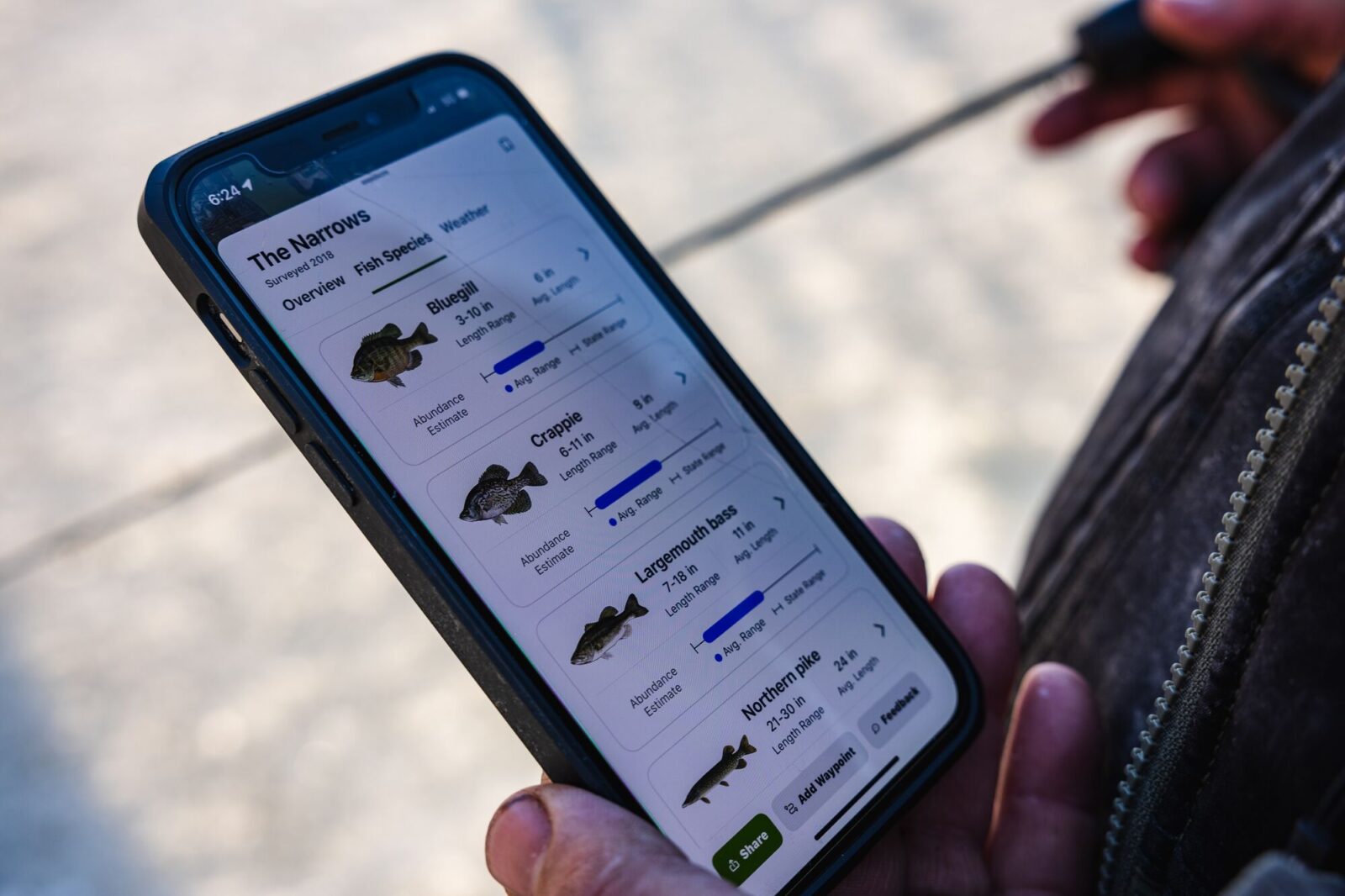
To optimize your success using onX Fish to predict fish locations and patterns, lean into Area Insights with Fishing Hotspots data. Lakes with Area Insights typically have seasonal pattern information by spot and by species that can be incredibly helpful. Check multiple spots to get ideas for what might work on a specific lake.
Users can also dive into onX Fish Midwest’s weather app portion; look at sunrise/sunset times, the barometer discussion, and lunar major/minors.
Find, Filter, Fish.
Whether you’re chasing trophies, memories, or dinner, onX Fish helps you find new lakes and gives you the confidence to explore new opportunities you never knew existed.
Because fish are cold-blooded, their activity, feeding, and location are dictated by water temperature, oxygen, and food availability. Seasonal changes affect how much they eat, how fast they grow, and where they move.
Warm water increases metabolism, making fish active and hungry; cold water slows them down. Low oxygen—common in winter or stagnant water—forces fish to move to areas with better flow, vegetation, or wind-mixed oxygen.
Most species move shallow in spring or early summer to spawn when temperatures and food levels support egg and fry survival. After spawning, fish often rest and then move deeper as summer warms.
- Spring: Shallow (warmer water, spawning)
- Summer: Deep/cool, or shaded shallow cover
- Fall: Transition from shallow feeding zones to deeper stability
- Winter: Deep, oxygen-stable zones